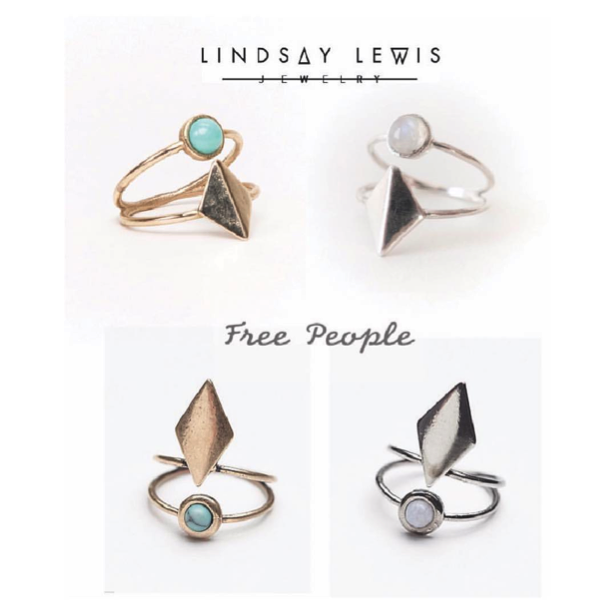This July, Los Angeles artist Tuesday Bassen posted a photo to Twitter showing her original designs next to suspiciously similar products made and sold by retailer Zara. Soon, news reports of her legal fight led to a swarm of allegations against the global fast-fashion company, with more than 40 designs identified by independent artists as their own—despite their claims that Zara had not paid any licensing fees.
.@Zara's lawyers are literally saying I have no base because I'm an indie artist and they're a major corporation. pic.twitter.com/vZNAV2l1vN
— Tuesday Bassen (@tuesdaybassen) July 19, 2016
The news wasn't surprising to Lindsay Lewis (of Lindsay Lewis Jewelry) or Meghan Lorenz (of Cities in Dust), two prolific Chicago jewelry designers who both say they've faced similar problems. According to them, many local jewelry designers come up against copyright issues at some point in their careers.
As recently as this April, Lewis noticed a Free People design that was an almost exact replica of her popular Dia ring. Upset, she went to Facebook and Instagram with side-by-side pictures to show the similarities.

In reaction, a Free People employee sent a Facebook message to Lewis saying, “I hate seeing this happen to designers just like you that work so hard on pieces.” Contacted by email, the employee declined to comment for this story and asked to stay unnamed.
But beyond taking the case public, Lewis says she felt that she had few other options. “There isn’t really anything I can do [legally] because they did change [the design] a little bit,” says Lewis. “I think the best thing that you can do now is put it out on social media. Have the consumers judge."
Chicago-based intellectual property attorney William H. Frankel confirms that a legal case would be tough to pursue, though he suggests that minor tweaks to a design don't necessarily protect a company from copyright infringement cases. “The test is one of substantial similarity,” he explains. “Two paragraphs can be substantially similar notwithstanding a few different words. Two paintings can be substantially similar notwithstanding a few minor variations." In other words, proving that two things are similar can be subjective—there are no hard-and-fast rules.
Still, it'd be impossible to pursue a case without first setting the proper groundwork, like registering a copyright claim with the U.S. Copyright Office, he says. That's especially important because if a court rejects the copyright claim, it could force the accuser to pay legal costs for the defendant, he warns.
Even if designers do pay to properly register their designs, take all the necessary steps, and they happen to win a lawsuit, they still have to pay for legal counsel up front without the promise of any return. As Lewis says, "A small designer doesn’t have the means to sue a big company. There’s no way.”
Lorenz says her own designs have also been copied by major retailers, and notes that copyright infringement is prevalent at all levels of the fashion industry. Though it's rarer, she says, emerging designers do it, too—especially on platforms like Etsy.
In those cases, a designer can reach out to local vendors and boutiques in hopes they will refrain from, or discontinue, selling the jewelry made by the accused designer.
“I make it a point to have a really good rapport and relationship with stores that I work with,” says Lorenz, noting that she has previously asked stores to do just that. “I believe that at this point, having done this for five years, there’s a mutual respect that I have with my accounts… I think we all support each other and understand what creative integrity means.”
On the flip side, both Lorenz and Lewis admit to feeling validated when they see their jewelry ripped off by a major retailer. Some designers, like Lewis, are even offered opportunities to work directly with these companies in the future.
The Free People employee who messaged Lewis asked her to share new designs with buyers at the company who might pay to license them. She did so, but has yet to hear back. “I created one ring they liked. I can create a thousand more rings that they like,” says Lewis.



